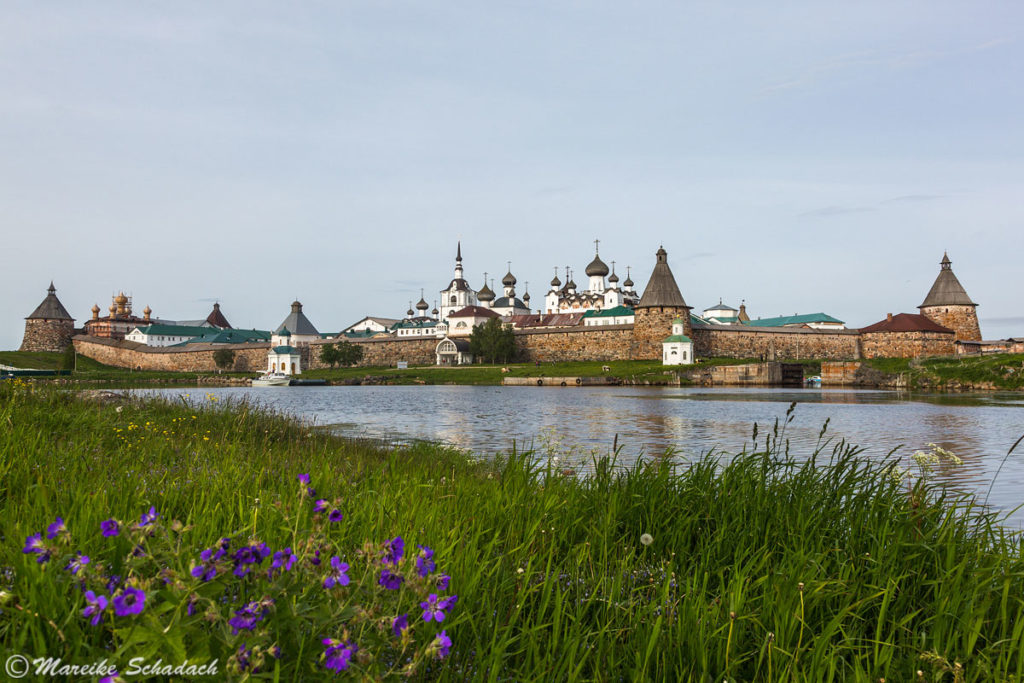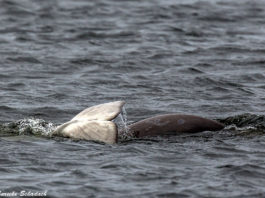Russia. Whoever goes to St. Petersburg first thinks of the world-famous Hermitage, the magnificent Cathedral of the Redeemer or St. Peter's Church with its high golden tower. But during my visit to St. Petersburg, a completely different museum took the first place - the Arctic and Antarctic Museum. Housed in a former church, it is the world's largest museum dedicated to the polar regions. And definitely worth a visit.
Wherever the opportunity arises to visit a polar museum, I am there with enthusiasm. Every time I take enough time to look at all the exhibits. But in the Arctic and Antarctic Museum in St. Petersburg, this is already a challenge. You can easily spend half a day in the museum, so many exhibits are on display. The signs and texts are unfortunately all in Russian, but there is an audio guide in English.

Did the polar virus get you too? If you want to learn more about the polar regions, then take a look at my book tips .
The Founding of the Arctic and Antarctic Museum Saint Petersburg
The Church of St. Nicholas was built between 1820 and 1838 in neo-classical style and was used by the orthodox Old Believers. In 1931, however, the church was closed. Six years later, in January 1937, the Museum for the Arctic and Antarctic was opened in the church building. For this purpose the exhibits, which were scattered throughout Moscow, Arkhangelsk and Leningrad, were brought together. During the Second World War, the collection was brought to Krasnoyarsk in Siberia. It was not until 1950 that the exhibits returned to St. Nicholas' Church and have been on display there ever since.
Most of the churches in St. Petersburg, which were converted during the Soviet era, are now used as churches again. According to the law, St. Nicholas Church is also to be reinstated as a church. But neither the museum nor the church itself seems to want to implement this demand.
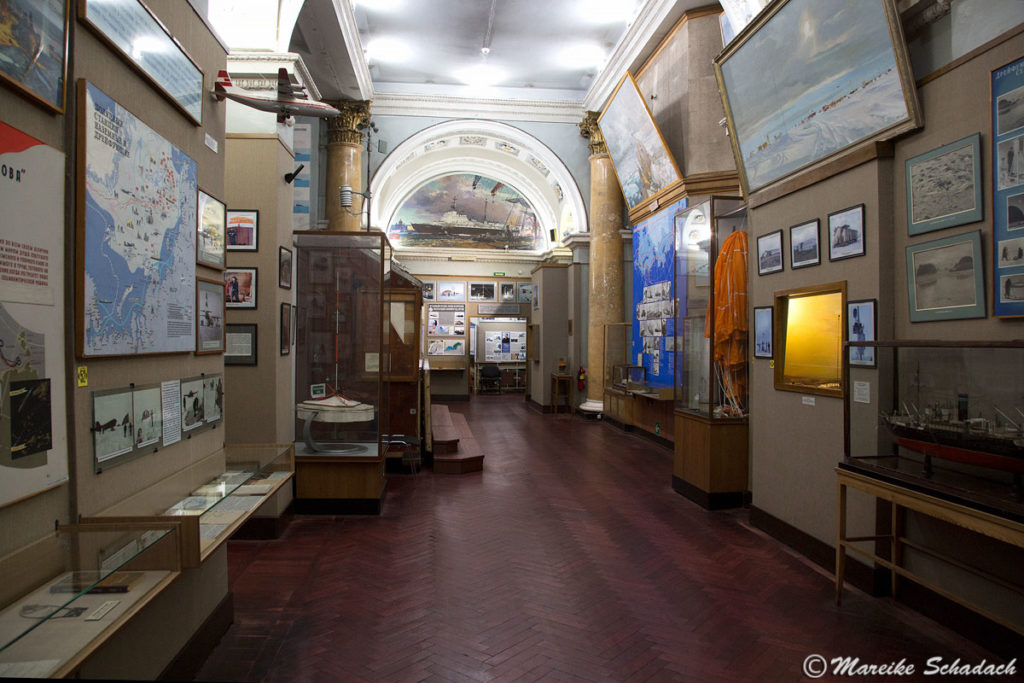
The Museum Collection
The collection of the Arctic and Antarctic Museum of Saint Petersburg consists of four sections:
- Arctic Geography and Nature
- Exploration of the North Pole
- Economy and culture of the peoples of the Arctic
- Antarctica
Arctic Geography and Nature
In the nave of the former church, the arctic geography and the flora and fauna living here is shown. In the middle of the main nave, a geographical model gives an overview of the northern polar regions. Dioramas of bird colonies, walrus families and stuffed animals of the Arctic are lined up on the walls. Above the entrance area hangs an airplane that was used during expeditions in the Arctic.

Exploration of the Arctic Ocean
In the left aisle you will learn about the exploration of the Arctic Ocean and the discovery of the North-East Passage. On display are pictures and models of Russian icebreakers, such as "Arctic" and "Lenin". You will also see other technical objects that were used in the exploration of the Arctic Ocean. Maps show the expedition routes of Russian ships and provide information about important captains and scientists. The life of a polar researcher is particularly vividly depicted with the fully equipped cabin of the Soviet research station "Severny Poljus-3".
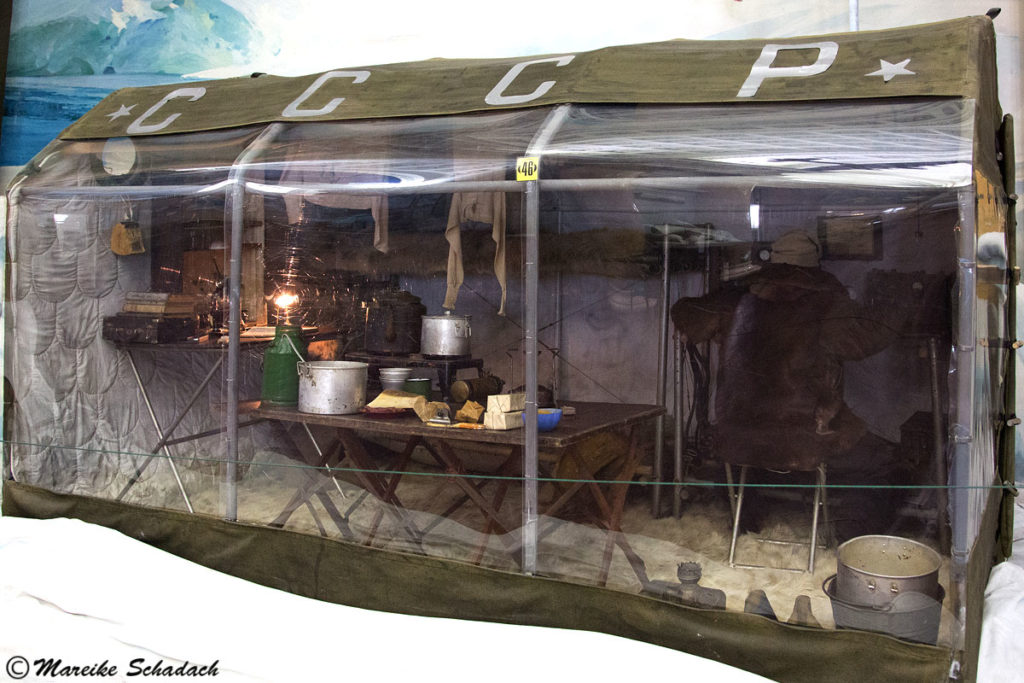
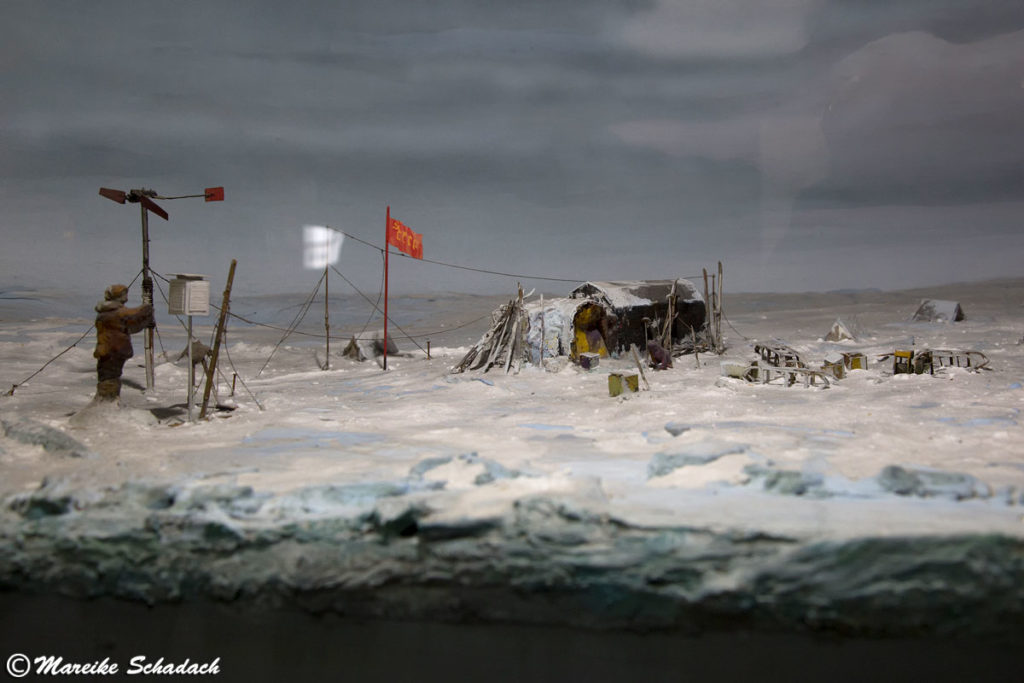
Economy and culture of the peoples of the Arctic
In the right aisle the traditional culture of the peoples of the Arctic, such as the Yakuts Komi, Karelians or Nenets is shown.
Antarctica
While the first floor of the church exclusively covers the northern polar region, the second floor has been dedicated to Antarctica since 1958. In the middle of the exhibition room, directly under the dome, stuffed penguins are presented in a showcase. Here, in the light of the glass dome, it is also a little more international: above the penguins fly the flags of the twelve states that signed the Antarctic Treaty at the Antarctic Conference in 1959. In contrast to the ground floor, where Russian Arctic research is the main focus, this floor also deals with research into the Antarctic of other states. For example, you can also see diaries of the race to the South Pole between the British Robert Scott and the Norwegian Roald Amundsen or the sled of Robert Scott.
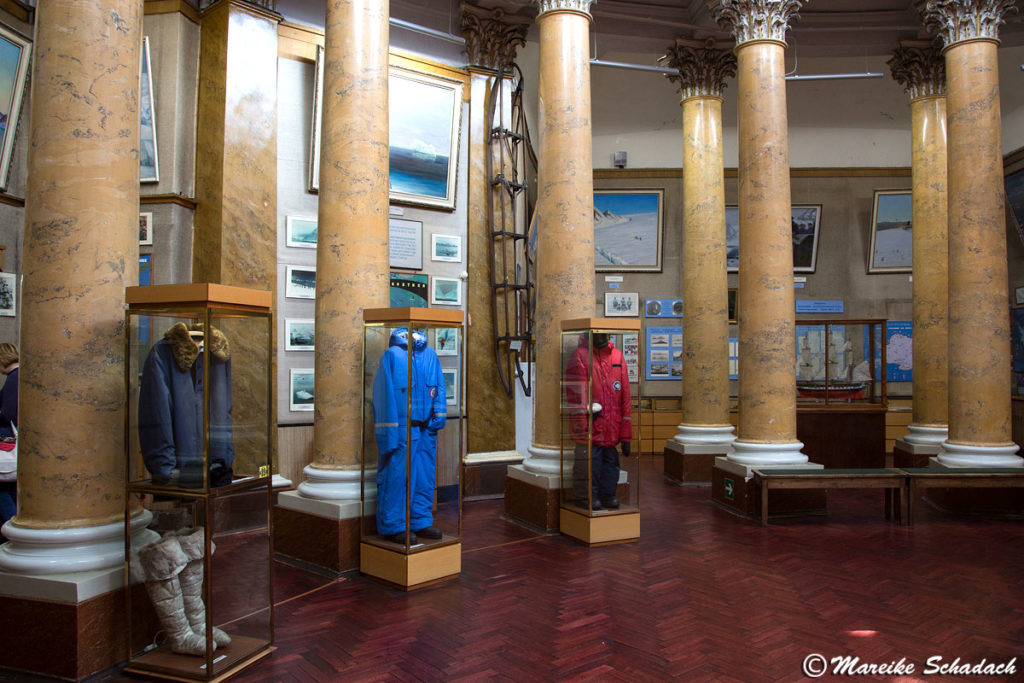
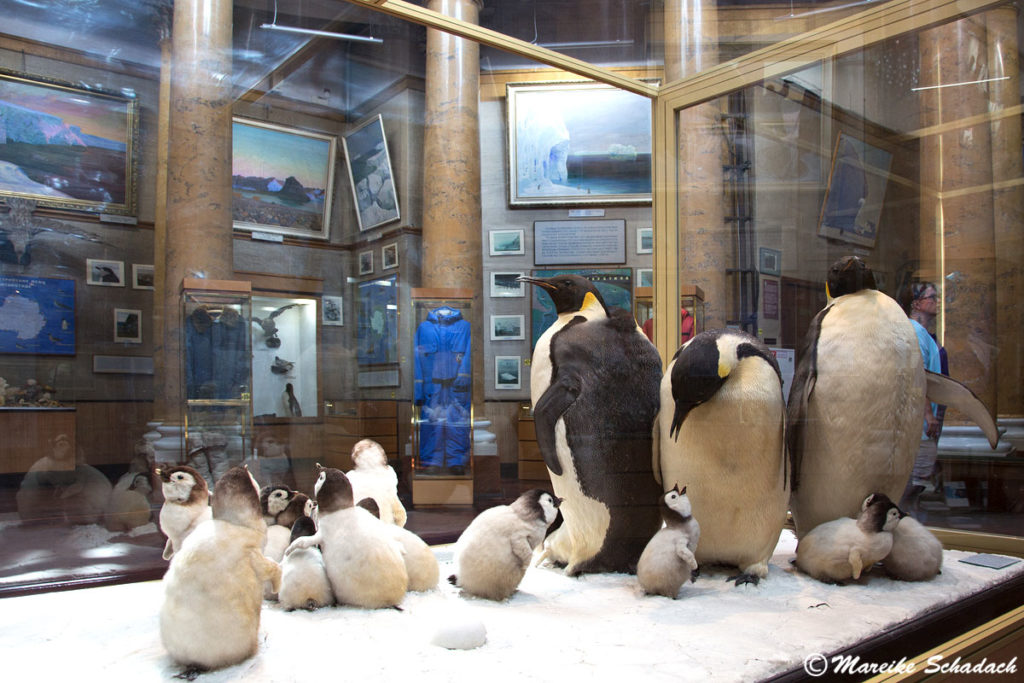
Also on display are the clothes of the explorers then and now, as well as items used on the expeditions of the time, including survival kits, sleds and tracked vehicles. Numerous maps, photos and paintings give an impression of the expeditions and the conditions under which they took place.
Excursus: Antarctic Treaty
The Antarctic Treaty was signed by 12 states in 1959 and came into force in 1961. The Antarctic Treaty is the first international agreement after the Second World War. In the middle of the Cold War, Western and Eastern powers agreed on the joint peaceful use of an uninhabited continent. The number of signatory states has now grown to 51. The Antarctic Treaty itself was concluded for an indefinite period. The objectives of the treaty are:
Peaceful use of Antarctica; international cooperation in research with unhindered exchange of information; individual countries defer their claims to territories; ban on military activities; disposal and import ban on radioactive waste.
You can read more about the Antarctic Treaty here .
Address and Opening Hours
(please check again before you go)
Address: Uliza Marata 24a
Open: Wed-Sat 10-18, Sun to 5 pm
Days off: Mon, Tue and last Thu of the month
Nearest Metro: Vladimirskaya or Mayakovskaya
Admission (in 2017): 100 rubles
Internet: https://www.polarmuseum.ru/
Have you ever been to Saint Petersburg and visited the Arctic and Antarctic Museum? How did you like it? Do you have any questions about my article or further suggestions? If so, please write me a comment!


